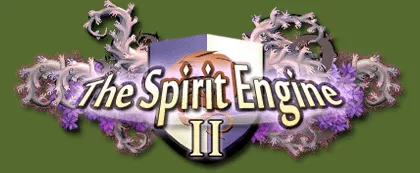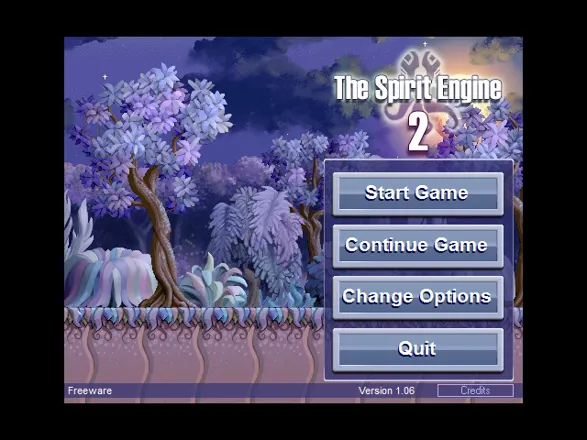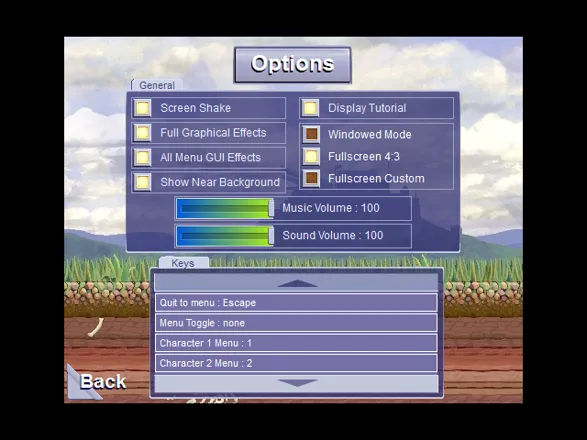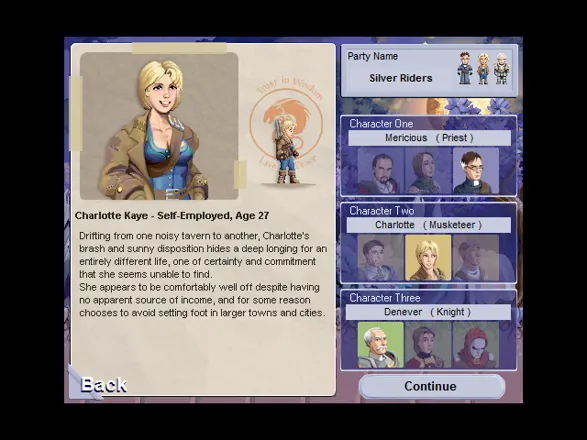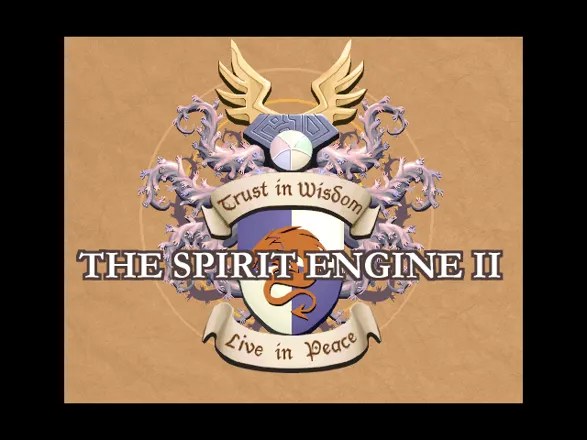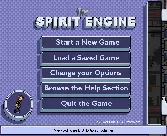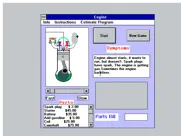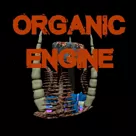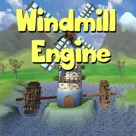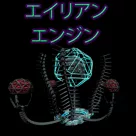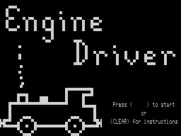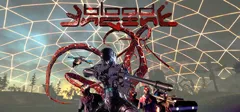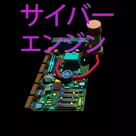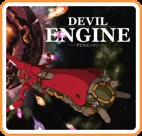The Spirit Engine II
Description
The Spirit Engine II is the sequel to The Spirit Engine. Like its predecessor, it's a side-scrolling RPG with tactical real-time combat.
The game takes place in the fictional world of Lereftain, at a time when murderous cults roam the streets, political tensions surge, war appears imminent and the country's inhuman rulers seem to be losing control.
The player can choose three out of nine different characters to form a party. Quests are taken from NPCs, experience is gained by defeating enemies in combat and occasionally also by completing certain quests, and items can be found or bought to equip the characters with.
Aside from a new story and quests, this sequel features improved graphics and various difficulty levels to play on. The combat system also underwent significant changes.
Groups +
Screenshots
Credits (Windows version)
25 People (4 developers, 21 thanks) · View all
| Game Design | |
| Coding | |
| Art | |
| Script | |
| Soundtrack | |
| Audio Programming | |
| Testing | |
| Josh Would Like to Thank |
|
| [ full credits ] | |
Reviews
Critics
Average score: 90% (based on 6 ratings)
Players
Average score: 4.0 out of 5 (based on 2 ratings with 1 reviews)
Nearly everything this game tries to do, it does just about perfectly
The Good
Once again, I’ll start by pointing out the pretty complex and complicated calculations used to determine skill effects or even character attributes, though now the formula used for all but three active skills, and also for health, has a set form. That form, if you’re curious, is ((XS + YPS) * (82 – S)) / 82 + ZP + N, where S is skill level, P is party level, X, Y and Z are the factors, which vary from skill to skill, by which these values are multiplied, and N is a number, which again varies from skill to skill, added to the result. In case of active offensive skills which use a weapon, the weapon damage, multiplied by a number which again varies from skill to skill, is added at the end of the calculation as well. Passive skills have a much simpler formula, though along the same lines, while the three active skills that do not follow the same pattern as the rest may be expressed as N + XS – ZP. And no, I didn’t get any signs wrong, so this is all very interesting once you realize what it means.
With me so far? Good, because there are also five different damage types and the corresponding defensive values associated with each of them, which values are split into resistances, expressed as a percentage, and armor, expressed as a set value deducted from the portion of the damage that makes it past the resistance. And then you have chi, which acts as a shield against all physical damage until it is depleted, aurora, which does the same for magical damage, and dodge chance.
Thankfully, this time around, health and, if applicable, chi are constantly displayed for enemies as well and all other attributes will be shown to you in a popup whenever you hover your mouse over a character or enemy. And knowing your enemies is crucial, since nearly every creature you’ll face will differ from the others, not only in appearance but also in attributes and tactics, so you’ll need to correctly choose the skills to use in every situation. And the choices aren’t limited to the up to 24 different skills you’ll have available at any one moment, but also include the ability to have the characters wait, individually or as a group, either for the right time to strike or for their energy bar to charge enough for them to enter overdrive, which grants massive bonuses for the next action.
The skill chains have also been improved from the first game, as now you’ll be allowed to create a much greater number of them, the number of actions in each chain may vary greatly and you may also create party chains, which may or may not include all characters, allowing individual chains to be combined with party chains as needed. What’s more, and perhaps most notably, you can now easily select single skills to use at any moment, so you can do without actual chains altogether if you so wish, though selecting a skill in such a way will essentially make the character in question start a chain containing only one skill.
Now I’ll have to apologize for focusing on the skills and battles so much, but you’ll probably be in combat most of the time and that’s actually a good thing in this game. To give a few examples, you’ll face enemies that can’t be hit while they attack and others that can’t be hit unless they’re attacking, enemies that constantly regenerate and others that constantly lose health but heal themselves whenever they strike, or enemies that attack harder the more they’re hit and enemies that stop attacking to greatly increase their defenses and rapidly regenerate when they’re badly injured. And let’s not even mention normal abilities like being able to stun, poison, charge their attacks, heal themselves or others or reduce your defenses, or the fact that they’ll frequently switch positions to ensure that the first one is the one most capable of taking the next hit. And all of that doesn’t even include the boss fights, which are almost always memorable, require unique tactics and in some cases may well take you about an hour to win, possibly even more on higher difficulty settings.
There are still no consumable items, which is still something that I’m quite fond of, seeing as I always avoid using those anyway, so all you can rely on in order to make it past everything the game will throw at you are your characters, their equipment and your brain, with the latter perhaps being the most important. Tactics and timing are absolutely crucial and the fact that you can pause at any moment to analyze the situation and choose the next skills to use means that your choices make all the difference, reflexes and hand-eye coordination not factoring into the outcome.
And to finally move past the combat, I must say that the story is actually quite interesting and it can at times make you think of quite a few important issues. A game created, as I must remind you, by a single person, which pays so much attention to the combat, includes such diverse equipment that you may be hard pressed to find an item that’s a direct upgrade of another, and features an art style that again proves a great attention to detail, might have been somewhat forgiven for a weaker story, but this is certainly not the case here. The characters are also fleshed out rather well and you’ll actually feel that you get to know and care for them as they develop over the course of the game. In addition, while you’ll no longer see the kind of individual starting cutscenes featured in the first game, the dialogues will be somewhat different and a few events may or may not happen depending on which of the nine available characters you select when you start the game.
The Bad
There aren’t many negative aspects, but I must start with the same lack of information I made note of when I reviewed the first game. Granted that it’s much better this time, but there are still two problems left: One is that there are a total of nine available active skills for priests and musketeers, so any such character you pick will lack the ability to use one of them but you won’t know which one until all others are unlocked, which may compromise any strategy you might have planned after reading the help file. The other is that, while now you do see a detailed description of each item in game, the exact effects of any special attributes it may have aren’t shown. Yes, there’s a separate utility available which will allow you to view the item database in greater detail, but why couldn’t this be included in the game as well, especially when the amount of money that can be obtained is fixed and far from sufficient to allow you to purchase and try everything?
Besides that, any other complaints are truly minor. I may mention the fact that I still don’t like the concept of save points instead of being able to save whenever and wherever you want, but at least this time around there are plenty of them and they no longer cost money to use. Or I may say that I still find it rather unpleasant that you have to pick one out of each group of three characters instead of three out of all nine, but that’s quite clearly required for the story and ends up working out quite well. Or I may also note that the varied enemies, constantly changing conditions and highly tactical battles quite frankly make skill chains useless, and in fact I never used them past the second chapter, but of course problems appear when useful options don’t exist, not when useless ones do, because they may be useful for others. The fact that you can no longer edit the chains during combat certainly doesn’t help, however.
The Bottom Line
Thankfully, it didn’t take nearly as long for me to start playing this game as I thought it would when I finished the first one. It actually took me longer to write the review after finishing it, but that has nothing whatsoever to do with the game itself, seeing as it is an absolutely outstanding effort for something created by a single person, including elements which’d put even a fair number of well-known titles to shame.
I should also mention that the two games in the series have nothing in common as far as the story and characters go, so you can certainly play this one without ever knowing anything about the first. I would, however, advise against doing so unless you’re sure you want to skip the other, because so many improvements have been made and so many flaws have been fixed that you’ll most probably find it very frustrating to play the first game after this one. So either only play this one or play them in the right order, without letting any frustration caused by the first prevent you from playing the second, unless of course the cause of that frustration is this entire concept of gameplay.
Now, I tend to focus on the negative aspects even when reviewing games I like, but this time there really was very little I disliked. Granted that it’s not some sprawling game, with branching storylines and a gigantic world to freely explore, so it can’t compare to one of those, but it still took me a passable 15 hours to complete on normal difficulty and I will once again stress that, with the exception of the music, which is also excellent, the entire game was created by a single person. One man designed every area, every enemy, every item, came up with those skill calculations, balanced everything just about perfectly, at least on normal difficulty, worked out the AI, created all the graphics, came up with the story, wrote the dialogues and polished each and every piece of this mechanism to a level that’s very, very rarely seen… And then, even if about a year and a half after the original release, he made it available for free so everyone will be able to enjoy it at will.
With the exception of that note I made about the lack of information, everything this game tries to do, it does just about perfectly. And it does that while also making you think, both about itself and about the world we live in. I may refrain from giving it maximum scores because those are generally reserved for those huge games with sprawling worlds, branching storylines and an atmosphere you can truly immerse yourself in, but for something you can get for free off the developer’s site, you’ll be hard pressed to find any better. So go right ahead and give it a try; you won’t regret it.
Windows · by Cavalary (11635) · 2012
Trivia
The game was made available as freeware in February 2010.
Analytics
Related Sites +
-
The Spirit Engine 2
Official site with free, legal download of the game
Identifiers +
Contribute
Are you familiar with this game? Help document and preserve this entry in video game history! If your contribution is approved, you will earn points and be credited as a contributor.
Contributors to this Entry
Game added by vedder.
Additional contributors: Cavalary.
Game added June 25, 2010. Last modified February 22, 2023.


